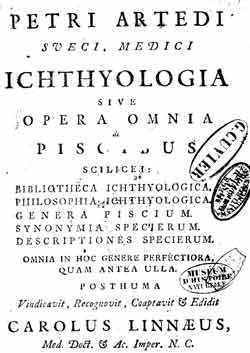|
Ernst Ehrenbaum
Ernst M. E. Ehrenbaum (20 December 1861 – 6 March 1942) was a German biologist (especially fishes) and oceanographer. Biography Ehrenbaum was born in Perleberg, Province of Brandenburg, Prussia. He studied natural sciences at the universities of Berlin, Würzburg and Kiel, receiving his degree at the latter institution in 1884. From 1888 to 1892 he was head of a ''wanderstation'' for German sea fishermen, and afterwards served as custodian for sea fishing at the Biological Institute Helgoland. From 1910 to 1931 he was director of the fish laboratory at the Museum of Natural History in Hamburg. He died in Marburg an der Lahn. Colleagues Harry Macdonald Kyle (1872–1951), was a Scottish ichthyologist and fisheries scientist. Abstract. Erna Mohr (11 July 189410 September 1968) was a German zoologist who made contributions to ichthyology and mammalogy. Taxa * ''Pellioditis ehrenbaumi'', nematode species described by Ernst Bresslau and Jacobus Hermanus Schuurmans Ste ... [...More Info...] [...Related Items...] OR: [Wikipedia] [Google] [Baidu] |
Biologist
A biologist is a scientist who conducts research in biology. Biologists are interested in studying life on Earth, whether it is an individual Cell (biology), cell, a multicellular organism, or a Community (ecology), community of Biological interaction, interacting populations. They usually specialize in a particular Outline of biology#Subdisciplines, branch (e.g., molecular biology, zoology, and evolutionary biology) of biology and have a specific research focus (e.g., studying malaria or cancer). Biologists who are involved in basic research have the aim of advancing knowledge about the natural world. They conduct their research using the scientific method, which is an empirical method for testing hypothesis, hypotheses. Their discoveries may have Applied science#Applied research, applications for some specific purpose such as in biotechnology, which has the goal of developing medically useful products for humans. In modern times, most biologists have one or more academic degre ... [...More Info...] [...Related Items...] OR: [Wikipedia] [Google] [Baidu] |
Ichthyology
Ichthyology is the branch of zoology devoted to the study of fish, including bony fish (Osteichthyes), cartilaginous fish (Chondrichthyes), and jawless fish (Agnatha). According to FishBase, 35,800 species of fish had been described as of March 2025, with approximately 250 new species described each year. Etymology The word is derived from the Ancient Greek words ἰχθύς, ''ikhthus'', meaning "fish"; and λόγος, ''logos'', meaning "study". History The study of fish dates from the Upper Paleolithic Revolution (with the advent of "high culture"). The science of ichthyology was developed in several interconnecting epochs, each with various significant advancements. The study of fish receives its origins from humans' desire to feed, clothe, and equip themselves with useful implements. According to Michael Barton, a prominent ichthyologist and professor at Centre College, "the earliest ichthyologists were hunters and gatherers who had learned how to obtain the most use ... [...More Info...] [...Related Items...] OR: [Wikipedia] [Google] [Baidu] |
19th-century German Scientists
The 19th century began on 1 January 1801 (represented by the Roman numerals MDCCCI), and ended on 31 December 1900 (MCM). It was the 9th century of the 2nd millennium. It was characterized by vast social upheaval. Slavery was abolished in much of Europe and the Americas. The First Industrial Revolution, though it began in the late 18th century, expanded beyond its British homeland for the first time during the 19th century, particularly remaking the economies and societies of the Low Countries, France, the Rhineland, Northern Italy, and the Northeastern United States. A few decades later, the Second Industrial Revolution led to ever more massive urbanization and much higher levels of productivity, profit, and prosperity, a pattern that continued into the 20th century. The Catholic Church, in response to the growing influence and power of modernism, secularism and materialism, formed the First Vatican Council in the late 19th century to deal with such problems and confirm ce ... [...More Info...] [...Related Items...] OR: [Wikipedia] [Google] [Baidu] |
:Category:Taxa Named By Ernst Ehrenbaum
Ernst M. E. Ehrenbaum (December 20, 1861 – March 6, 1942) was a German biologist (especially fishes) and oceanographer Oceanography (), also known as oceanology, sea science, ocean science, and marine science, is the scientific study of the ocean, including its physics, chemistry, biology, and geology. It is an Earth science, which covers a wide range of top .... Ehrenbaum, Ernst ... [...More Info...] [...Related Items...] OR: [Wikipedia] [Google] [Baidu] |
Lobster
Lobsters are Malacostraca, malacostracans Decapoda, decapod crustaceans of the family (biology), family Nephropidae or its Synonym (taxonomy), synonym Homaridae. They have long bodies with muscular tails and live in crevices or burrows on the sea floor. Three of their five pairs of legs have claws, including the first pair, which are usually much larger than the others. Highly prized as seafood, lobsters are economically important and are often one of the most profitable commodities in the coastal areas they populate. Commercially important species include two species of ''Homarus'' from the northern Atlantic Ocean and Scampi (other), scampi (which look more like a shrimp, or a "mini lobster")—the Northern Hemisphere genus ''Nephrops'' and the Southern Hemisphere genus ''Metanephrops''. Distinction Although several other groups of crustaceans have the word "lobster" in their names, the unqualified term "lobster" generally refers to the clawed lobsters of the fam ... [...More Info...] [...Related Items...] OR: [Wikipedia] [Google] [Baidu] |
World's Columbian Exposition
The World's Columbian Exposition, also known as the Chicago World's Fair, was a world's fair held in Chicago from May 5 to October 31, 1893, to celebrate the 400th anniversary of Christopher Columbus's arrival in the New World in 1492. The centerpiece of the Fair, held in Jackson Park, was a large water pool representing the voyage that Columbus took to the New World. Chicago won the right to host the fair over several competing cities, including New York City, Washington, D.C., and St. Louis. The exposition was an influential social and cultural event and had a profound effect on American architecture, the arts, American industrial optimism, and Chicago's image. The layout of the Chicago Columbian Exposition was predominantly designed by John Wellborn Root, Daniel Burnham, Frederick Law Olmsted, and Charles B. Atwood. It was the prototype of what Burnham and his colleagues thought a city should be. It was designed to follow Beaux-Arts principles of design, namely ne ... [...More Info...] [...Related Items...] OR: [Wikipedia] [Google] [Baidu] |
Crangon Vulgaris
''Crangon crangon'' is a species of caridean shrimp found across the northeastern Atlantic Ocean. Its range extends from the White Sea in the north of Russia to the coast of Morocco, including the Baltic Sea, and appears also throughout the Mediterranean Sea, Mediterranean and Black Seas. Commercially important, it is fished mainly in the southern North Sea. Common names include brown shrimp, common shrimp, bay shrimp, and sand shrimp, while translation of its French name ' (or its Dutch equivalent ') sometimes leads to the English version grey shrimp. Krangṓn (κραγγών) is an Ancient Greek word for shrimp. Description Adults are typically long, although individuals up to have been recorded. The animals have cryptic colouration, being a sandy brown colour, which can be changed to match the environment. They live in shallow water, which can also be slightly Brackish water, brackish, and feed nocturnally. During the day, they remain buried in the sand to escape predato ... [...More Info...] [...Related Items...] OR: [Wikipedia] [Google] [Baidu] |
Kiel Bay
The Bay of Kiel or Kiel Bay (, ; ) is a bay in the southwestern Baltic Sea, off the shores of Schleswig-Holstein in Germany and the islands of Denmark. It is connected with the Bay of Mecklenburg in the east, the Little Belt in the northwest, and the Great Belt in the North. Maritime traffic entering or leaving the Baltic through the two Belts must enter the bay. Once in, through traffic to the Baltic passes through another strait, the Fehmarn Belt, into the Bay of Mecklenburg, which opens out into the Baltic Sea. In the other direction, traffic can either pass northward through the Great Belt, keeping Langeland on the port side, or enter the Kiel Fjord and traverse the Kiel Canal directly to the mouth of the Elbe River and the North Sea. The Kiel Fjord ends at Kiel, the capital of Schleswig-Holstein. Geography The southwest shore of the bay is the coast of Schleswig-Holstein. From the latter drains the Schlei inlet, actually a brackish estuary, at the head of which is the cit ... [...More Info...] [...Related Items...] OR: [Wikipedia] [Google] [Baidu] |
Mussel
Mussel () is the common name used for members of several families of bivalve molluscs, from saltwater and Freshwater bivalve, freshwater habitats. These groups have in common a shell whose outline is elongated and asymmetrical compared with other edible clams, which are often more or less rounded or oval. The word "mussel" is frequently used to mean the bivalves of the marine family Mytilidae, most of which live on exposed shores in the intertidal zone, attached by means of their strong Byssus, byssal threads ("beard") to a firm substrate. A few species (in the genus ''Bathymodiolus'') have colonised hydrothermal vents associated with deep ocean ridges. In most marine mussels the shell is longer than it is wide, being wedge-shaped or asymmetrical. The external colour of the shell is often dark blue, blackish, or brown, while the interior is silvery and somewhat nacreous. The common name "mussel" is also used for many freshwater bivalves, including the freshwater pearl mussels. F ... [...More Info...] [...Related Items...] OR: [Wikipedia] [Google] [Baidu] |
Eduard Reichenow
Johann Eduard Reichenow (7 July 1883 – 23 March 1960) was a German protozoologist. He was the son of ornithologist Anton Reichenow. Biography Reichenow was born in Berlin. He studied natural sciences in Heidelberg, Berlin and Munich, and received his doctorate in 1908. After graduation he conducted research of protozoans at the Imperial Health Ministry in Berlin. From 1913 onward, he served as a government zoologist in Kamerun, where he did studies on the biology of the malaria pathogen. From 1916 to 1919 he conducted research at the ''Museo Nacional de Ciencias Naturales'' in Madrid, and in 1921 was appointed director of the protozoology department at the '' Schiffs- und Tropenkrankheiten'' in Hamburg. During the same year, he received his habilitation from the University of Hamburg and in 1925 obtained the title of professor. He was an editor of the journals: ''Zeitschrift für Tropenmedizin'', the '' Zentralblatt für Bakteriologie'' and the ''Zeitschrift für Parasite ... [...More Info...] [...Related Items...] OR: [Wikipedia] [Google] [Baidu] |
Microsporidia
Microsporidia are a group of spore-forming unicellular parasites. These spores contain an extrusion apparatus that has a coiled polar tube ending in an anchoring disc at the apical part of the spore.Franzen, C. (2005). How do Microsporidia invade cells?. Folia Parasitologica, 52(1–2), 36–40. doi.org/10.14411/fp.2005.005 They were once considered protozoans or protists, but are now known to be fungi, or a sister group to true fungi. These fungal microbes are obligate eukaryotic parasites that use a unique mechanism to infect host cells. They have recently been discovered in a 2017 Cornell study to infect Coleoptera (beetles) on a large scale. So far, about 1500 of the probably more than one million species are named. Microsporidia are restricted to animal hosts, and all major groups of animals host microsporidia. Most infect insects, but they are also responsible for common diseases of crustaceans and fish. The named species of microsporidia usually infect one host species ... [...More Info...] [...Related Items...] OR: [Wikipedia] [Google] [Baidu] |








